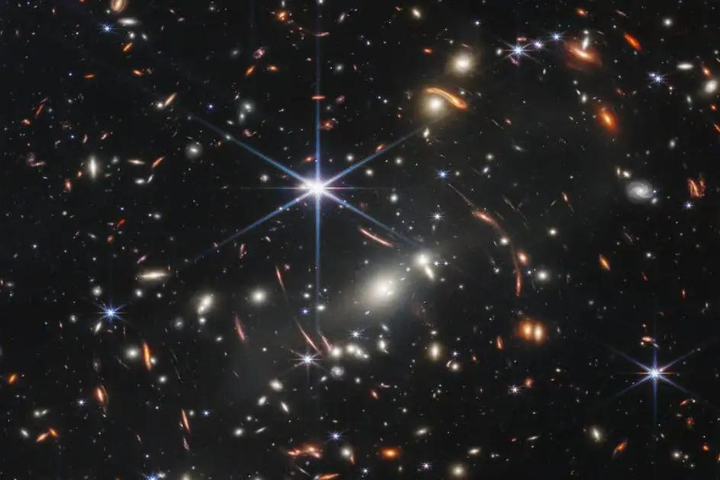In a groundbreaking discovery, NASA’s James Webb Space Telescope (JWST) has captured an extraordinary phenomenon: a single supernova appearing three times due to a cosmic event known as gravitational lensing. This rare occurrence, caused by the immense gravitational pull of a galaxy cluster in the Ursa Major constellation, bent and magnified the supernova’s light, creating three distinct images. The event was captured by JWST’s Near-Infrared Camera (NIRCam), revealing the light from the supernova at three different stages of its explosion. This discovery not only showcases the power of gravitational lensing but also offers new insights into the ancient relics of the cosmos.
Gravitational Lensing and the Power of Cosmic Magnification
Gravitational lensing is a cosmic phenomenon that showcases the incredible power of massive celestial objects to bend and focus light, similar to how ordinary lenses work on Earth. The bending occurs because of the massive gravitational forces exerted by large objects like black holes or galaxy clusters. In this case, a galaxy cluster named PLCK G165.7+67.0 (G165), located in the constellation Ursa Major, acted as the gravitational lens. By bending and magnifying light from more distant sources, this cluster allowed the James Webb Space Telescope (JWST) to capture multiple images of a single supernova.
The supernova, a colossal explosion marking the end of a star’s life, appeared in three different locations in the sky due to the light traveling along different paths through the gravitational lens. These distinct paths resulted in the supernova being imaged at three separate times, providing scientists with a unique view of the event’s progression. This phenomenon enables researchers to study the supernova in unprecedented detail, offering deeper insights into the universe’s farthest reaches.
A Supernova Seen in Three Places, Across Time
The three images of the supernova captured by JWST were made possible by the paths of light being distorted by the massive gravitational forces of G165. Since each path had varying lengths, the light from the supernova arrived at different times, much like how a three-panel mirror reflects the same person at different moments. According to Brenda Frye, co-author of the study, this time delay is akin to seeing a sequence of events unfold from different angles: one mirror shows the start, another the middle, and the final one the conclusion of an action.
The images were taken over several months using JWST’s Near-Infrared Camera (NIRCam), with observations occurring in March, April, and May of the previous year. What makes this discovery remarkable is that it provides scientists with a chronological view of a supernova’s explosion across time, as seen through the “lenses” of gravitational bending. The galaxy cluster G165 itself lies 3.6 billion light-years away from Earth, while the supernova is even farther, making this discovery not just a triumph of astronomy, but also a look deep into the ancient cosmos.




GIPHY App Key not set. Please check settings